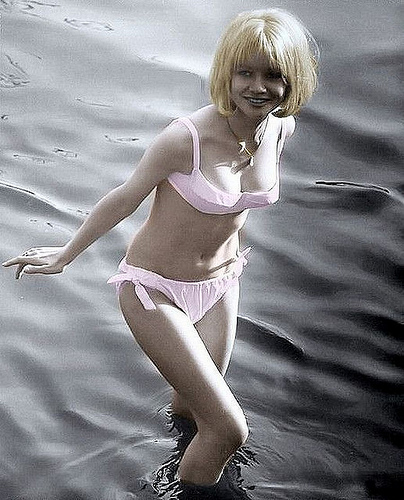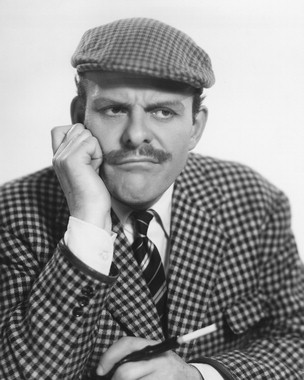Much like Gary Cooper - that other prime example of the strong, silent type - Randolph Scott is an actor that I've only come to appreciate over the past several years. Though he started off in standard "handsome leading man" roles in comedies and dramas back in the 1930s, what I like to call the "real" Randolph Scott emerged in the late 1940s and really came to the fore in the 1950s. As he aged, Scott's handsome face became more weathered and craggy, his air of quiet authority and mild Southern gentility more pronounced, and from 1948 on, all his roles but one were on horseback, where he truly belonged. Rather than shirk it, Scott happily embraced his status as a "cowboy" actor. It was a genre which he obviously enjoyed, one in which he excelled, and one that, along with his canny business acumen, made him a rich man for the rest of his long life, long after he retired from acting. Though superstars like John Wayne and Clint Eastwood loom larger in the public imagination of what a western movie hero looks like, it's Randolph Scott who to my mind seems most inextricably linked to the genre - the quintessential screen cowboy. In his unassuming, solid-as-a-rock way, Scott headlined a string of colorful bread-and-butter westerns, modestly-budgeted but well-mounted, the top tier of which hang with the best that the 50s had to offer. And for those that know the way the western genre flourished and dominated that decade, that's no small praise indeed. Silly as it seems now, when I was younger, I used to find Scott a bit of a stiff, a decent actor but bland. Ah, callow youth! As I've gotten older (and, ones hopes, wiser), I've grown to admire the subtleties of performance and emotion he skillfully layered into his trademark stoic demeanor, apparent in his best late-career films. Along with his superlative work in the elegiac Sam Peckinpah masterpiece, Ride the High Country (1962), most western fans tend to agree that the films he made with director Budd Boetticher rank as the pinnacle of his career. A man of action in his private life as well as a director with an instinctive feel for the genre, Boetticher also had a marvelous eye for staging action amidst the wide vistas of the American west. Between 1956 and 1960, he made seven films with Scott in the lead, sometimes referred to as the "Ranown cycle," (from the production company run by Scott and partner Harry Joe Brown). These were tight, "no muss, no fuss" cowboy pictures, filmed almost entirely outdoors, featuring small but strong casts performing well-crafted dialogue, usually courtesy of writer Burt Kennedy. These films' deceptively simple plots allowed maximum room for character conflict and depth revealed through pointed conversations, nearly always staged by Boetticher against expansive scenic backdrops. Like their lead actor, the Ranown westerns were laconic and to the point. No overwrought melodrama here, yet the presiding themes of the post-war western - guilt, tragedy, betrayal and redemption - were there nonetheless, plain to see, but handled with subtlety and finesse. The best of the Scott / Boetticher westerns are lean, muscular little gems of genre goodness, and for all their modest budgets and slight running times, surely rank among the best westerns ever made. 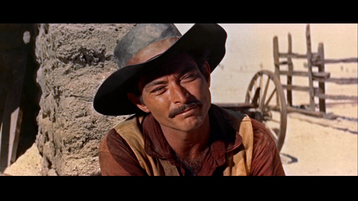 Picking a favorite Scott / Boetticher western isn't easy. Though all seven are well worth watching, four of them clearly stand out as the cream of the crop: Seven Men from Now (1956), The Tall T (1957), Ride Lonesome (1959) and Comanche Station (1960). All are excellent films, each with their own considerable strengths, and a case could be made for any of them as best in show. While Seven Men from Now may arguably be the greatest of them all, qualitatively speaking, time after time, it's Ride Lonesome that I keep coming back to. Down a dusty, boulder-strewn trail rides a lone horseman. His name is Ben Brigade (Randolph Scott), he's a bounty hunter, and he's come to take an outlaw back to Santa Cruz to hang for murder. The outlaw, Billy John (James Best), is waiting for him, seemingly unconcerned...mainly due to several of his cronies hiding out in the rocks above, waiting to pick Brigade off. When it becomes clear he'll be the first to die should his men start shooting, Billy John gives up, but not before shouting to his compadres to ride out and fetch his big, bad older brother, Frank (Lee Van Cleef), to come and take him back.  En route, Brigade and his prisoner swing by a stagecoach stop, where they're joined by Sam Boone (Pernell Roberts) and Whit (James Coburn), as well Mrs. Lane (Karen Steele), the strikingly attractive wife of the outpost's owner. Boone and Brigade have crossed paths before, and seem to enjoy a certain level of mutual respect and camaraderie, even when it becomes apparent that Boone and Whit have an agenda of their own - they want to be the ones to turn Billy John in. If they do so, their slate of past misdeeds will be wiped clean and they can make a fresh start, free from the constant fear of the law. When the stage charges wildly in, driver and occupants slaughtered by marauding mescaleros, it's clearly time to hightail it out of there. It soon becomes clear that Mrs. Lane's husband has been killed by the Indians, and the group dynamics subtly shift, from frank admiration of her beauty to something altogether more primal. Even Brigade feels the pull. The group head out ostensibly for Santa Cruz, but it quickly dawns on the sharp-witted Boone that Brigade is in no rush to evade the pursuing Frank and his men...in fact, he seems deliberately intent on letting them catch up. Though the two clash at first, Mrs. Lane finds herself drawn to the soft-spoken yet resolute Brigade. She can't reconcile Brigade's upright demeanor and gentleness, demonstrated by his solicitous treatment of his wounded horse, with his mercenary occupation. As the group get closer and closer to their destination, Boone and Whit get increasingly troubled by the idea of having to kill Brigade to gain possession of Billy John, but are no less determined to secure their future. But Brigade's true motives finally become clear as they reach a lonely clearing, empty save for a single, ugly tree trunk, spiking upwards like an accusing finger. A hanging tree. This place has a tragic history for Brigade, and it's here that he plans to have his final reckoning with Frank. But will he have to deal with Boone and Whit first?  Much like his extremely capable yet modest screen persona, Randolph Scott never seemed afraid to share the limelight, and as a result, all of the Scott / Boetticher westerns are impeccably cast with scene-stealing talent. Ride Lonesome might just have the most well-rounded supporting roster of them all: Lee Van Cleef, James Best, James Coburn and Pernell Roberts. Roberts especially really shines in his part as the smiling antihero Boone, and watching his instant, easy charisma and laid-back charm here, so different from his buttoned-down, dour Adam Cartwright on TV's Bonanza, it's a wonder that he didn't become a bigger star in films. He's terrific, and a large part of the success of the picture is down to him. James Best does a nice job treading the line between cowardly rat and good ol' boy humor; and it rather saddens me that most modern audiences only know him, if they know him at all, for his broad schtick on the dire The Dukes of Hazzard, when he has left behind so much sharply-observed work like this, earlier in his career. Up-and-comer Coburn doesn't get a whole lot to do here, but uses his wide, toothy grin and rawboned physicality to good effect. He and Roberts make for an engaging pair, and share one delightful scene in particular, where Roberts' Boone tells the loyal but none-too-bright Whit that, after five years of riding together, he plans to make him a partner in his ranch, once they get their amnesty. "How come?" Whit asks. Nonplussed, Boone replies, "Cause I like you, Whit." The way Coburn plays Whit's innocent reaction is priceless: "Why, I never knew that!" A claim could be made that where Ride Lonesome falls down, compared to its Boetticher brethren, is in the way its main villain is so thinly sketched. Lee Van Cleef is sadly underused but possesses enough natural menace to make Frank work, just. His character is tied to Scott's Brigade by a truly heinous act, but this past transgression is dealt with in such a matter-of-fact, low-key manner that his limited screen time doesn't quite resonate with the power it perhaps should have. Van Cleef of course famously went on to a storied career in spaghetti westerns, and it's there that one will find his best and most iconic work. Compared to the meaty bad guy parts enjoyed by the wonderful Richard Boone in The Tall T or (the equally wonderful) Lee Marvin in Seven Men From Now, Van Cleef's Frank is small potatoes. The Scott / Boetticher westerns all feature interesting leading ladies, generally strong, able to handle themselves in a bad situation, frequently complicated and, above all else, supremely feminine...and the gorgeous, statuesque Karen Steele is no exception. If she's perhaps too beautiful to be fully believable as a woman living a hard-scrabble life out in the harsh desert scrub, so be it...back in the glory days of Hollywood, people went to the movies to see some glamour, dammit, and Boetticher wasn't about to shortchange his audience. And Steele is infinitely believable as not just an object of lust, but of civilization, warmth, and hope for a brighter future. Most of Miss Steele's career seems to have been spent on television, perhaps most famously in the early season one Star Trek episode, "Mudd's Women," where she gets a lot more to chew on, acting-wise, than she does in Ride Lonesome. She's a welcome presence all the same, and it's a pity that, other than with the notable exceptions of this film and fellow Scott / Boetticher shoot-'em-ups, Decision at Sundown (1957) and Westbound (1959), she didn't appear in more big-screen westerns during the genre's heyday. Burt Kennedy's script is a model of precision and economy, every conversation fleshing out plot, motivation and character. Boetticher eschews close-ups, keeping his camera mostly at a distance, in either medium or long shots, the better to foreground his players amidst the dry, expansive landscapes. The film appears to have been shot entirely on location, most of it in Lone Pine, California. Scads of westerns were filmed at Lone Pine over the years, of course, but such is Boetticher's skill that he makes the scenery look brand new and unique. He also keeps things fresh by staging the action in a variety of natural environments, from great rocky bluffs and canyons, to sand dunes, prairie, meadow and pine forest. The result is a film that - thanks to Boetticher's eye for Cinemascope compositions, and the unshowy skill of his frequent collaborator on the Ranown movies, cinematographer Charles Lawton, Jr. (who lensed some heavy hitter westerns in his time, including Jubal, 3:10 to Yuma, Cowboy and Two Rode Together) - always looks good...in fact, frequently spectacular. The high caliber of script, performance and technical skills on display all work to make Ride Lonesome a terrific night at the movies - and everything's anchored by the dependable, sturdy, hard-working, quietly commanding screen presence of the star at its center, and the center of this blogathon: Mr. Randolph Scott. This post is my contribution to the Randolph Scott Blogathon, hosted by Toby at his indispensable blog, 50 Westerns of the 50s. A big thanks to Toby for putting this event together. Please mosey on over to the corral there to check out the great posts by other bloggers, or click on the blogathon banner below. DVD Note: Here in Region 1, Ride Lonesome is part of the fabulous, now out-of-print and exorbitantly expensive The Films of Budd Boetticher collection from Sony (which also includes The Tall T, Decision at Sundown, Buchanan Rides Alone and Comanche Station). Each film gets its own disc, and there are several good extras on hand, including a brief yet insightful introduction by Martin Scorsese on Ride Lonesome. The transfers on all five films are quite nice, but if any movies are crying out for the sharper resolution of a Blu-Ray release, these are the ones. Since this is Sony we're talking about, not bloody likely, unfortunately.
20 Comments
Great post, Jeff, and an ideal choice for the blogathon. I think the theme of redemption and a final cathartic break with a crippling past is handled best in this film - all four of the greatest Scott/Boetticher films (which I fully agree with you on, incidentally) have their own strengths of course.
Reply
Jeff
1/24/2015 10:41:10 am
Thanks very much, Colin! We're definitely in agreement on these movies. You make a very good point about Van Cleef's Frank acting more as an off-stage bogeyman, to be laid to rest by movie's end...it is indeed like the usual Ranown film's heavy has been split in two - the ruthless killer Frank and the amiable bad man with the potential for redemption in Boone. I wouldn't be surprised if Boetticher and Scott saw just how good Roberts was and gave him some more "lyrics." It is, as Laura suggest below, a rather surprisingly good and dominating, charismatic performance.
Reply
Fantastic post on what has become my favorite Randolph Scott film. (SEVEN MEN FROM NOW runs a close second.) I saw this film for the first time just a couple of years ago but have already returned to it twice. It is simply wonderful, for all the reasons you cite, but perhaps especially for the Pernell Roberts performance. His interactions with every other character in the film help lift the movie to a whole 'nother level. As good as the supporting actors are here and in the other Ranown films, this is my favorite supporting performance of the cycle, and I sure had no idea it was coming based on my past exposure to his work.
Reply
Jeff
1/24/2015 10:44:43 am
Thank you for the kind words, Laura! So glad you feel equally strongly about this film as I do. I had exactly the same reaction as you to Pernell Roberts' performance...it's almost startling just how good he is. I enjoyed Roberts well enough on BONANZA, but had no idea he had this kind of easygoing charisma in him.
Reply
1/24/2015 09:38:47 am
You broke down the glories of "Ride Lonesome" beautifully. Each time I watch it I marvel that it did not make Pernell Roberts a huge movie star. Quite a talent.
Reply
Jeff
1/24/2015 10:51:46 am
Thank you, Caftan Woman! You're right, the casual, offhand way Frank mentions the "hurt" he once did Brigade - implying all the bad things he must have done to others through the years, so much so that he's practically forgotten hanging a man's wife, is indeed chilling. I probably shouldn't complain about Van Cleef's lack of screen time...it's just that he's so good when given more to do. Not really a big deal when we have so much good Pernell Roberts stuff as compensation.
Reply
Jerry Entract
1/24/2015 05:31:24 pm
Fine review, Jeff. Boy, you surely picked a great movie as your choice.
Jeff
1/25/2015 08:34:34 am
Thank you, Jerry! That's great that you've got an actual film print of this to watch at your leisure at home...I have to make do with the DVD but it still looks pretty good on my 50 inch plasma TV. ;)
Reply
john k
1/25/2015 10:31:56 pm
A very fine essay Jeff,and I love the screenshots that you have chosen.
Reply
Jeff
1/26/2015 06:57:34 pm
Thank you very much, John! I didn't mean to disparage Pernell Roberts' work on BONANZA, which I think is good, sometimes quite good, in the early seasons, when he seems to care more about the show and scripts. It is a pity he didn't think much of the show, which at its best could be very good indeed.
Reply
Blake Lucas
1/27/2015 04:32:32 am
An excellent piece, Jeff, as everyone has already said. I especially feel that you not only evoked it in what you wrote but in choosing really great screen captures that evoke its cinematic beauty so well, along with the action, characters, relationships..
Reply
Jeff
1/27/2015 09:37:23 pm
Thank you for your kind and detailed comments, Blake!
Reply
1/29/2015 04:33:39 pm
Great writeup Jeff, well done! RIDE LONESOME is probably my favourite of the Ranown cycle, though I did have the honour to be in the audience at a screening of TALL T attended by Boetticher in London, which remains a truly treasured memory
Reply
Jeff
1/29/2015 08:07:00 pm
Cheers, Sergio! I really envy you, not only getting to see THE TALL T on a big screen, bit with Boetticher in attendance. I hope he had a chance to speak to the audience; he seemed like a low-key but natural raconteur.
Reply
Clayton @ PHANTOM EMPIRES
1/30/2015 05:24:54 am
So many good ones to choose from, and this is one of those.
Reply
Jeff
1/31/2015 09:52:33 am
Thanks, Clayton! Good to see you back around the blogosphere! That honestly had never occurred to me, Scott's resemblance to Dick Tracy. Now that you point it out, I can see it. He would've made a good one, I think...not that there's anything wrong with Ralph Byrd.
Reply
Great review, Jeff. Like you, I've come to appreciate Randolph Scott's 1950s Western more as I grow older. This is a fine one with a terrific cast (Lee Van Cleef, James Best, James Coburn and Pernell Roberts--pretty impressive). The 1950s was the best decade for Westerns!
Reply
Jeff
1/31/2015 09:54:52 am
Hey Rick! Thanks for swinging by and commenting - much appreciated! Yeah, this is a good one, for sure. I think it's hard to argue that any other decade could beat the 1950s for westerns. I'm partial to many in the 60s as well, but the lion's share of the greats come from that golden period.
Reply
I agree with you about Randolph Scott being the quintessential cowboy. When I was younger, I had the same reaction towards him that you did, but I've grown to appreciate him.
Reply
Jeff
2/2/2015 09:00:00 pm
Hi Ruth! Yes, this blog takes its name from the excellent, scenic and suspenseful movie of the same name. I think both Eva Marie Saint and Gregory Peck (not to mention a young Robert Forster) are SO good in THE STALKING MOON...very naturalistic. And the villain, though almost entirely remaining in the shadows throughout, comes across as very scary and dangerous - almost a bogeyman. (His name - Salvalje- means "ghost.") No typical "Indians riding around in circles, getting picked off their horses like some fairground arcade shooting gallery" here (one of the very few flaws marring RIDE LONESOME - Indians as mere targets)...this is Apache as ferocious, elemental ninja force.
Reply
Your comment will be posted after it is approved.
Leave a Reply. |
Videophilia!
Opinionated ramblings about new and old movies (mostly old, as that's the way I like 'em!) Blogs of Note
Stuart Galbraith IV's World Cinema Paradise
Movie Morlocks (TCM's Classic Movie Blog) 50 Westerns from the 50s Riding the High Country Sweet Freedom Tipping My Fedora Thrilling Days of Yesteryear Silver Screenings Laura's Miscellaneous Musings Classic TV and Film Cafe Just a Cineast She Blogged By Night Chess, Comics, Crosswords, Books, Music, Cinema Out of the Past - A Classic Film Blog Pretty Sinister Books They Don't Make 'Em Like They Used To In So Many Words... Greenbriar Picture Shows Flix Chatter My Love of Old Hollywood Tales of the Easily Distracted Another Old Movie Blog Lasso the Movies Kevin's Movie Corner Films From Beyond the Time Barrier Carole & Co. Rupert Pupkin Speaks Caftan Woman Vienna's Classic Hollywood The Lady Eve's Reel Life ClassicBecky's Brain Food Hey!
Be sure to subscribe to the RSS feed below, to be informed of new postings! Categories
All
Archives
September 2015
|


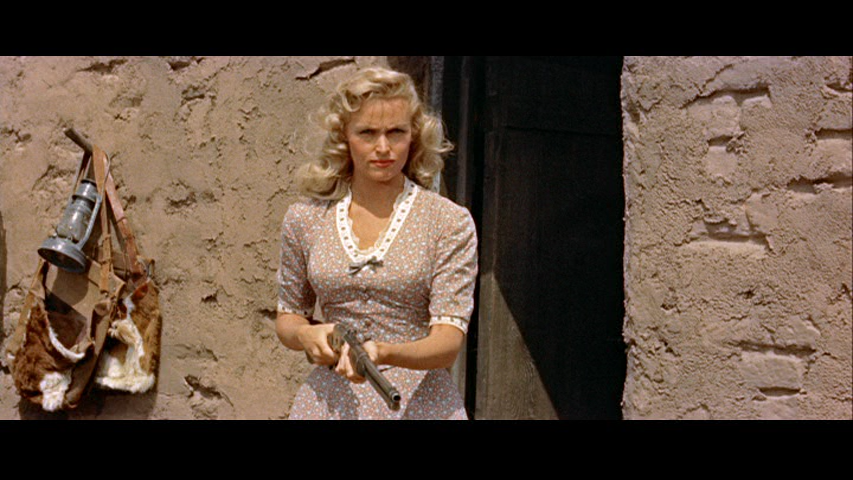
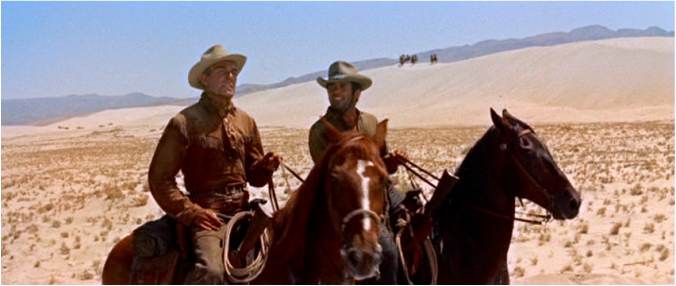








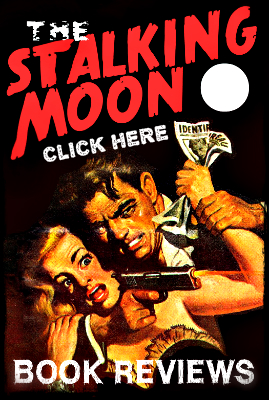

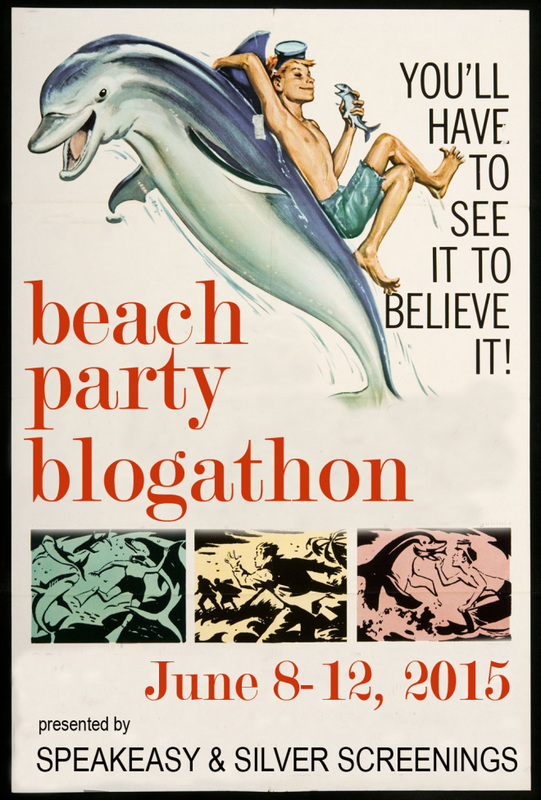
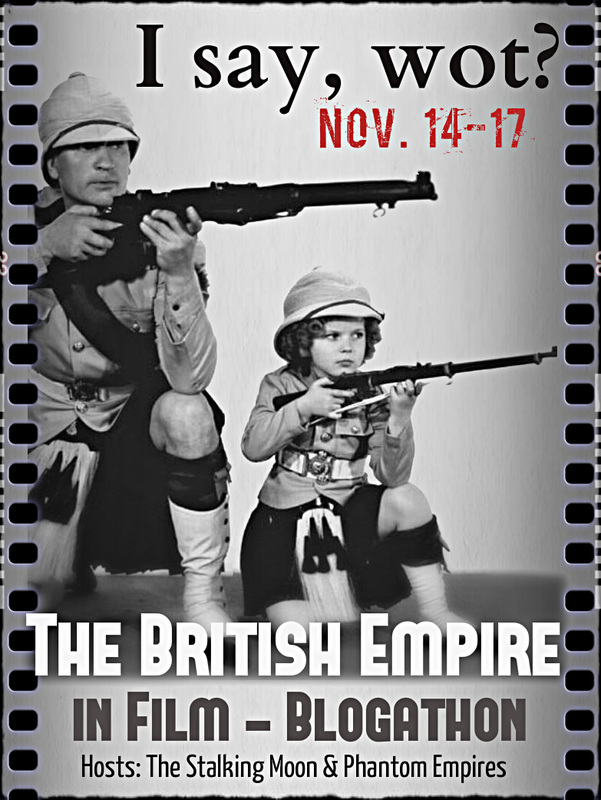


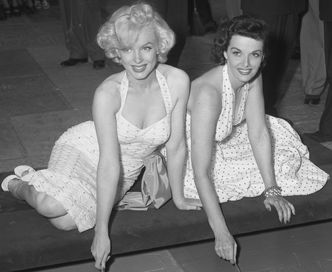
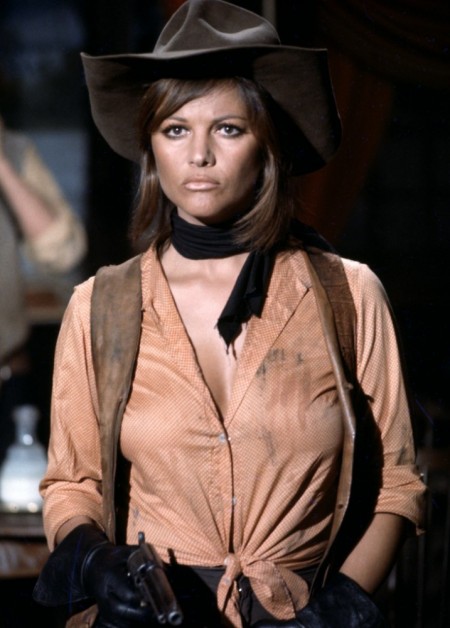























 RSS Feed
RSS Feed




